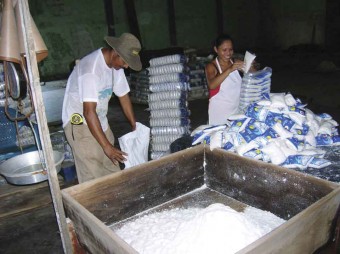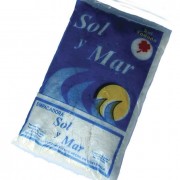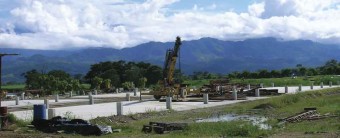Sea Salt
Guatemala produces unrefined natural sea salt which is much higher in vital essential minerals…and it’s inexpensive as well
Wars have been fought over it. Deer in the woods and cows in the pasture love it. Gourmet shops hold sophisticated human tastings of it in elegant surroundings. If you spill some and wish to ward off future bad luck, throw a pinch over your left shoulder. In Roman times soldiers were given a special allowance to purchase it.
It’s salt, and Guatemala’s salt is special indeed. It is not just special since it costs one twentieth of what you would pay in industrialized countries, but because it is an all-natural product. Consider these health claims for sea salt: “Unrefined natural sea salt is much higher in vital essential minerals (especially magnesium), having been in contact with the living ocean for millions of years … Good unrefined sea salt does contain all the minerals and micro-nutrients that are present in the sea (over 80 elements) that have been shown to support life and good health.”
And consider these comments from a 2008 salt tasting session in Oregon: “Humble salt is enjoying something of a renaissance, with gourmets singing the praises of artisanal salt they offer 85 varieties of sea salt, which include those with mild to intense salinity, with a touch of sweetness and with hints of unexpected flavors (like truffles). For your wedding meal … suggest featuring a trio of salts, delicate fleur de sel, a snappy flake sea salt and a smoked sea salt —at each table.”
Guatemala’s major salt works are less than two hours by car on some of the country’s best-paved roads, from either Guatemala City, Lake Atitlán or La Antigua. The near beach areas to the west of Sipacate and much of the estuarine area that parallels the Pacific Ocean have been adapted to producing natural sea salt from the nearby pristine Pacific waters.Humble salt is enjoying something of a renaissance, with gourmets singing the praises of artisanal salt. 85 varieties of sea salt are available, which include those with mild to intense salinity.
The basic process to produce the sea salt is to create diked areas, lined or otherwise drain proof, to pump or haul salt water into them and to let Mother Nature’s sunshine do the rest. After the water evaporates, the salt dries it is pushed into mounds and then sold. The very large-scale salt works sell by the ton, but there are smaller cooperatives and individual mom-and-pop backyard operations.
Salt is a compound composed of sodium and chlorine, and different salts from different areas of the world vary slightly as to trace elements that might be present. A crucial trace element is iodine, which defends humans from thyroid deficiency or goiter. Iodine is so crucial to goiter prevention that where absent naturally it is usually added to salt. No problems here with Guatemala’s sea salt, which contains naturally occurring iodine in ideal proportions for human health.
Best of all about Guatemala’s sea salt is the price. If you visit the Sipacate cooperative, where artisan salt is packed by hand, the bad news is that your minimum purchase is a 25-pound bulk package containing 25 individually wrapped one-pound packages. The good news is that the 25 pounds cost Q14, or $.07 per pound. Your friends will thank you.
photos by Carlisle Johnson gmg988@yahoo.com



Carlisle,
Nice salty article!
Mike